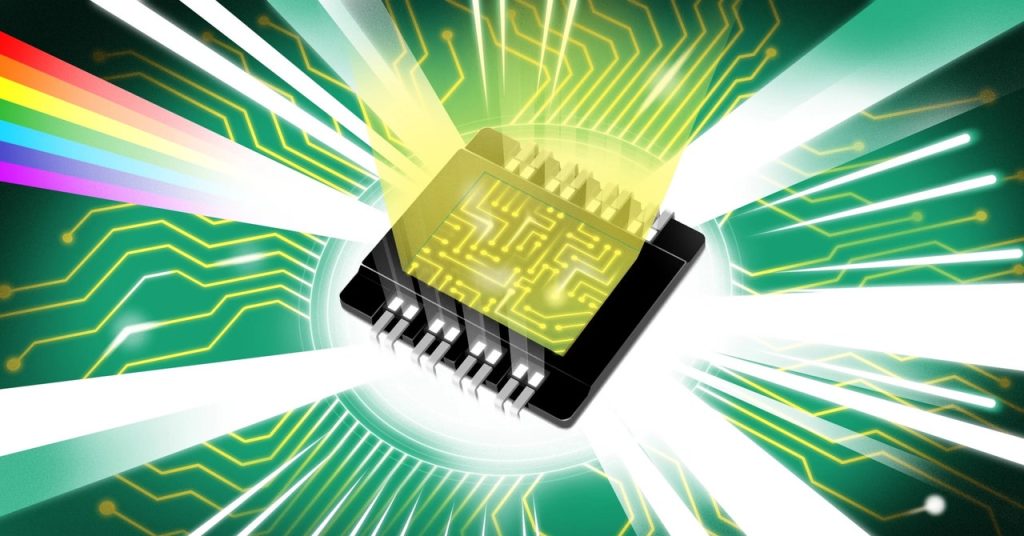The Future of AI: Can Light-Based Chips Meet Growing Computing Demands?
Introduction
Moore’s law, which predicts that computer chips will double in transistor count every two years, has driven significant advancements in computing speed and efficiency. However, the rapid growth in AI’s computing needs is outpacing this trend. The International Energy Agency forecasts that AI will consume ten times more power by 2026 compared to 2023, with data centers using as much energy as Japan.
The amount of [computing power] that AI needs doubles every three months. It’s going to break companies and economies.
— Nick Harris, founder and CEO of Lightmatter
The Promise of Optical Computing
Advantages of Light-Based Systems
Optical computing, which uses photons instead of electrons, offers several potential benefits:
- Higher Bandwidth: Optical signals can carry more information.
- Speed: Optical systems can perform more computing steps in less time.
- Efficiency: Optical computers could run more operations simultaneously, using less energy.
If we could harness these advantages, this would open a lot of new possibilities.
— Gordon Wetzstein, Stanford University
Historical Context and Recent Advances
Early Attempts
In the 1980s and 1990s, researchers experimented with optical systems for AI, including an early optical neural network (ONN) for facial recognition developed by Demetri Psaltis and colleagues at the California Institute of Technology.
Modern Breakthroughs
Recent advancements have focused on matrix multiplication, a key operation in neural networks. In 2017, a team from MIT demonstrated an optical neural network on a silicon chip, which could perform matrix multiplication more efficiently than electronic systems.
Current Developments
HITOP Network
A new optical network called HITOP, developed by Dirk Englund and collaborators, aims to scale up computation throughput using time, space, and wavelength dimensions. This system can run machine-learning models 25,000 times larger than previous optical chips.
Reconfigurable Optical Chips
Researchers at the University of Pennsylvania have developed a reconfigurable optical neural network that can change its calculations on the fly by altering laser patterns. This flexibility allows for post-installation training, a significant advantage over traditional systems.
Challenges and Future Prospects
Scaling Up
Despite promising lab results, optical computing systems need to be scaled up to compete with electronic chips like those made by Nvidia. The challenge lies in solving numerous engineering puzzles that have already been addressed in electronic computing.
Specialized Applications
Optical neural networks may first find success in specialized applications, such as counteracting interference between wireless signals. For example, Bhavin Shastri’s team developed an ONN that can sort out different transmissions in real-time, using significantly less power than electronic systems.
Long-Term Vision
The ultimate goal is to develop an optical neural network that surpasses electronic systems for general use. Simulations suggest that within a decade, large optical systems could make AI models over 1,000 times more efficient than future electronic systems.
Lots of companies are now trying hard to get a 1.5-times benefit. A thousand-times benefit, that would be amazing. This is maybe a 10-year project—if it succeeds.
— Peter McMahon, Cornell University
Conclusion
While optical computing has made significant strides, it remains a long-term project with the potential to revolutionize AI by offering unprecedented efficiency and speed. The journey to surpass electronic systems is filled with challenges, but the rewards could be transformative.
Original story reprinted with permission from Quanta Magazine, an editorially independent publication of the Simons Foundation whose mission is to enhance public understanding of science by covering research developments and trends in mathematics and the physical and life sciences.

6 Comments
Are we seriously trusting in light to solve such a massive issue?
Light-based chips sound cool, but energy needs are a complicated beast!
Bright idea or just a flash in the pan?
Just another flashy tech trend, or does this actually have legs?
Can light-based chips really keep up with our energy demands?
OpineOasis: Fascinating, but how scalable is this really?